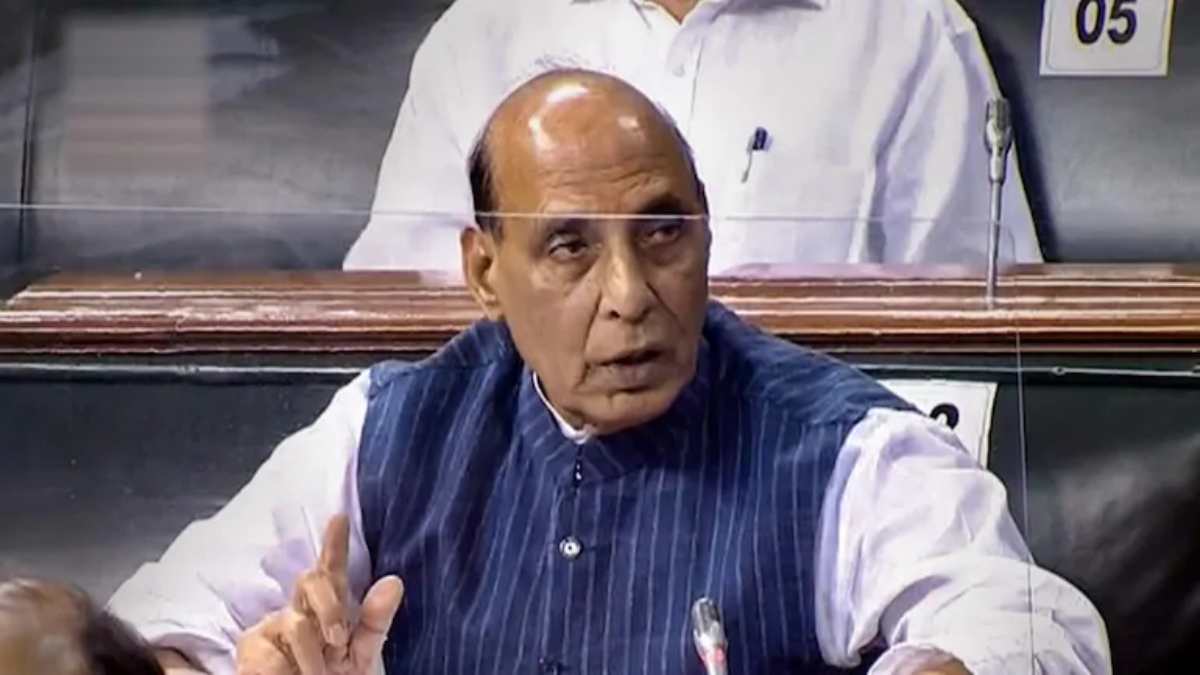


Defence Minister Rajnath Singh in the Lok Sabha on Monday said that Chinese troops’ violent conduct along the Line of Actual Control (LAC) violated all mutually agreed norms between New Delhi and Beijing. China has uni- laterally violated bilateral agreements signed in 1993 and 1996, the Defence Minister said while making a statement on the ongoing India-China border tensions in the Lok Sabha.
This is exactly what External Affairs Minister S. Jaishankar had pointed out during his meet- ing with China’s foreign minister Wang Yi in Moscow. The Daily Guardian in its report on 12 September had revealed all the de- tails of how Jaishankar exposed PLAs’ disregard for the agreements of 1993 and 1996.
According to this report, Jaishankar had told Wang that People’s Liberation Army (PLA) troops were disregarding the previous agreements for border peace reached between India and China. Jaishankar had exposed how PLA troops’ aggressive actions are against the agreements of 1993 and 1996 between New Delhi and Beijing.
Rajnath Singh has reiterated what EAM Jaishankar had said during the meeting with his Chinese counterpart in Moscow. This is being seen as India’s strategy on both the diplomatic and defence leadership levels to expose China as an irresponsible country.
The border pacts that both Jaishankar and Rajnath referred to are five in numbers, but both the ministers’ main focus was on the agreements of 1993 and 1996. Jaishankar had categorically told Wang that PLA soldiers’ action was in gross violation of the “Agreement on Maintenance of Peace and Tranquility along the Line of Actual Control in the India-China Border areas” which was signed between both the nations in 1993.
Similarly, Jaishankar pointed out how PLA’s misdeeds were violative of “Agreement on Confidence Building Measures in the Military Field along the LAC” struck between both the countries in 1996.
The Defence Minister also spoke about these two agreements in the Lok Sabha while slamming China over violating these pacts. The stage had been set by Jaishankar in Moscow to expose China’s behaviour amounting to disrespecting the agreements which Beijing signed with New Delhi.
According to MEA sources, India’s strategy is to send out a message to the global community that China is not honouring the pacts of which it is a signatory. “This raises a larger question among the world community as to how a country (China) can be trusted by global powers which has no respect for the bilateral agreements of mutual peace and coexistence,” an official said.
China is also aware of how India’s aggressive diplomacy in that direction may have potential to drive home the message about Beijing being an irresponsible state, argues an official. “It is highly unbecoming of a country, which is a permanent member of the UNSC, to blatantly disregard bilateral agreements” is the message that New Delhi has been giving to the world. Definitely, Chinese leadership must also be getting this message in right perspective, says the official.
Starting from Jaishankar’s at- tack on Chinese side over this issue to Rajnath pointing it out in Lok Sabha, India has been able to ventilate this particular message across the world. It is indicative of India’s clear diplomacy to step up pressure on China which was, hitherto, trying to take a high
moral ground putting the blame on the Indian armed forces for what it called provoking PLA troops along LAC. The Chinese leadership has been trying to give clean chit to its army, an attempt which had also been countered by Jaishankar in Moscow meeting.
“No activities of either side shall overstep the Line of Actual Control. In case personnel of one side cross the Line of Actual Control, upon being cautioned by the other side, they shall immediately pull back to their own side of the Line of Actual Control. When necessary, the two sides shall jointly check and determine the segments of the Line of Actual Control where they have different views as to its alignment,” said the 1993 agreement.
Three years later, both sides went into further specifics, making it clear that troops on both sides shall“exercise self- restraint” in case of a face-off situation and start “immediate consultations” through diplomatic channels.
In the 1996 agreement, signed in New Delhi on 29 November of that year, India and China had vowed to arrive at a “common understanding of the alignment of the Line of Actual Control in the India-China border areas”.
“If the border personnel of the two sides come in a face-to-face situation due to differences on the alignment of the Line of Actual Control or any other reason, they shall exercise self-restraint and take all necessary steps to avoid an escalation of the situation. Both sides shall also enter into immediate consultations through diplomatic and/or other available channels to review the situation and prevent any escalation of tension,” said the 1996 agreement. The agreement of 1996, also for the first time in India-China rules of engagement, makes it clear that “neither side shall open fire or conduct blast operations within 2 km of the Line of Actual Control”.